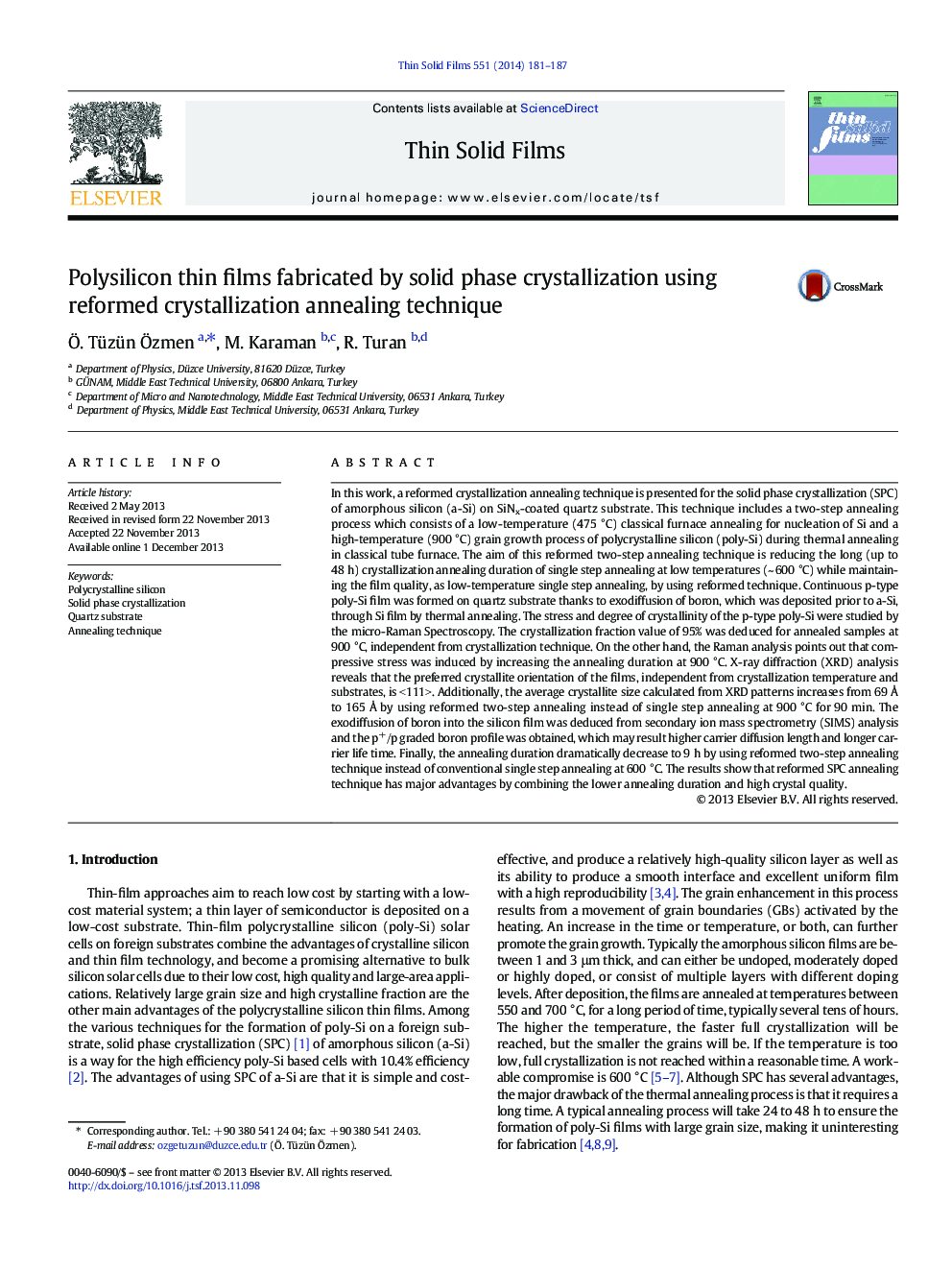| Article ID | Journal | Published Year | Pages | File Type |
|---|---|---|---|---|
| 1665612 | Thin Solid Films | 2014 | 7 Pages |
•Two-step annealing technique was studied for solid phase crystallization process.•Technique consists of annealing at 475 °C/8 h and 900 °C for 30, 60 and 90 min.•Poly-Si films with <111> orientation and crystallization up to 95% were formed.•Reformed technique decreases annealing duration by resulting large crystallite size.•p+/p graded profile was achieved by using two-step crystallization annealing.
In this work, a reformed crystallization annealing technique is presented for the solid phase crystallization (SPC) of amorphous silicon (a-Si) on SiNx-coated quartz substrate. This technique includes a two-step annealing process which consists of a low-temperature (475 °C) classical furnace annealing for nucleation of Si and a high-temperature (900 °C) grain growth process of polycrystalline silicon (poly-Si) during thermal annealing in classical tube furnace. The aim of this reformed two-step annealing technique is reducing the long (up to 48 h) crystallization annealing duration of single step annealing at low temperatures (~ 600 °C) while maintaining the film quality, as low-temperature single step annealing, by using reformed technique. Continuous p-type poly-Si film was formed on quartz substrate thanks to exodiffusion of boron, which was deposited prior to a-Si, through Si film by thermal annealing. The stress and degree of crystallinity of the p-type poly-Si were studied by the micro-Raman Spectroscopy. The crystallization fraction value of 95% was deduced for annealed samples at 900 °C, independent from crystallization technique. On the other hand, the Raman analysis points out that compressive stress was induced by increasing the annealing duration at 900 °C. X-ray diffraction (XRD) analysis reveals that the preferred crystallite orientation of the films, independent from crystallization temperature and substrates, is <111>. Additionally, the average crystallite size calculated from XRD patterns increases from 69 Å to 165 Å by using reformed two-step annealing instead of single step annealing at 900 °C for 90 min. The exodiffusion of boron into the silicon film was deduced from secondary ion mass spectrometry (SIMS) analysis and the p+/p graded boron profile was obtained, which may result higher carrier diffusion length and longer carrier life time. Finally, the annealing duration dramatically decrease to 9 h by using reformed two-step annealing technique instead of conventional single step annealing at 600 °C. The results show that reformed SPC annealing technique has major advantages by combining the lower annealing duration and high crystal quality.
